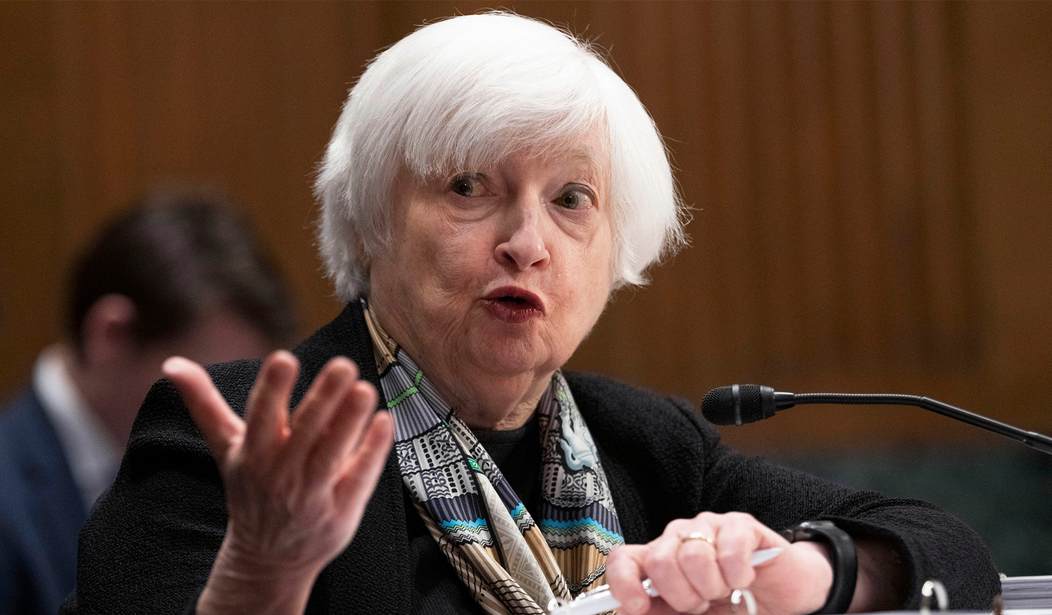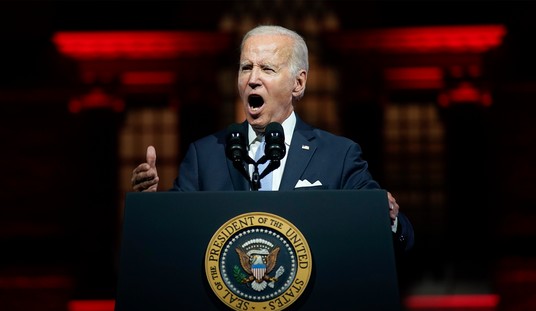President Biden, or whoever is actually running the Executive Branch since January 2021, has had some historic moments. The disastrous withdrawal from Afghanistan, the highest inflation rate in 40 years, and the first black lesbian press secretary are just a few that come to mind. Now they can add another notable event to the steaming dumpster fire of accomplishments to date. Fitch Ratings downgraded the nation’s credit rating from AAA to AA+.
The last time this happened was after the debt ceiling fight in 2011 under President Barack Obama. Standard and Poor’s put the pinch on the U.S. score, downgrading it to an AA+ with a negative outlook. So when Joe Biden was vice president, the U.S. took its first credit hit. Now that he is president, the credit rating took a hit again.
Once again, the media is blaming the most recent debt ceiling fight for Fitch’s action. That episode in ineffective governance prompted Fitch to place a negative outlook on the U.S. financial performance. However, it appears the decision to downgrade the nation is based on issues endemic in Washington. According to Fitch:
The rating downgrade of the United States reflects the expected fiscal deterioration over the next three years, a high and growing general government debt burden, and the erosion of governance relative to ‘AA’ and ‘AAA’ rated peers over the last two decades that has manifested in repeated debt limit standoffs and last-minute resolutions.
The statement specifically notes that the U.S. government’s failure to provide a medium-term financial framework, which some call a budget, factored into the firm’s decision. For those of you keeping score, the last time Congress completed all of the steps in the budgeting process was in 1996. In the intervening years, gridlock and grandstanding have reduced the process to a series of omnibus packages, continuing resolutions, and debt ceiling increases.
Related: You Won’t Believe What We’re Spending ONE TRILLION DOLLARS to Buy
This is the government equivalent of asking the bank to raise the credit limit on your current credit cards while making the minimum payments and obtaining new cards when you max out the old ones. Fitch noticed:
In Fitch’s view, there has been a steady deterioration in standards of governance over the last 20 years, including on fiscal and debt matters, notwithstanding the June bipartisan agreement to suspend the debt limit until January 2025. The repeated debt-limit political standoffs and last-minute resolutions have eroded confidence in fiscal management.
And while candidates are out there promising not to touch Medicare and Social Security to secure the Boomer vote, Fitch sees these ever-expanding entitlements as significant problems. Once again, the generation with a death grip on power will drag us all down with it:
Additionally, there has been only limited progress in tackling medium-term challenges related to rising social security and Medicare costs due to an aging population.
These programs, along with defense spending, are a significant contributing factor to Fitch’s other observation that the country continues to spend like a drunken sailor, driving up deficits and debt. While President Biden claims he reduced the deficit, Fitch’s forecast predicts the deficit to rise to 6.3% of GDP in 2023, up from 3.7% in 2022. Remember that the deficit is just the money the government will spend this year in excess of what it raises in revenues.
By contrast, the national debt is the accumulation of all the deficits and interest. Fitch noted that the debt-to-GDP ratio has come down since the pandemic high in 2020 but remains above pre-pandemic levels.
At 112.9% this year it is still well above the pre-pandemic 2019 level of 100.1%. The GG debt-to-GDP ratio is projected to rise over the forecast period, reaching 118.4% by 2025. The debt ratio is over two-and-a-half times higher than the ‘AAA’ median of 39.3% of GDP and ‘AA’ median of 44.7% of GDP. Fitch’s longer-term projections forecast additional debt/GDP rises, increasing the vulnerability of the U.S. fiscal position to future economic shocks.
That means if you took every single dollar the nation and all of its citizens generated in income in 2025, you would still need almost 20% more to pay to eliminate the nation’s debt.
Quite a legacy the Silent Generation and Baby Boomers running the show in D.C. are leaving their grandchildren and great-grandchildren. The stock market is reacting to the news about the credit rating with declines across the board. This could be the first hit the market takes this month. The second could come if there is a significant announcement regarding a gold or commodity-backed currency from the BRICS nations after their summit later this month.
While Fitch seems to think the United States has a revenue problem, citing the tax cuts under President Trump, the nation actually has a spending problem. The government needs to enact real entitlement reform and end deficit spending for the foreseeable future. However, until there are more Rand Pauls and fewer Mitch McConnells in the Senate and several more Chip Roys in the House, along with a resident at 1600 Pennsylvania Avenue who can explain fiscal reality and act on it, expect the hits to keep coming.









Join the conversation as a VIP Member